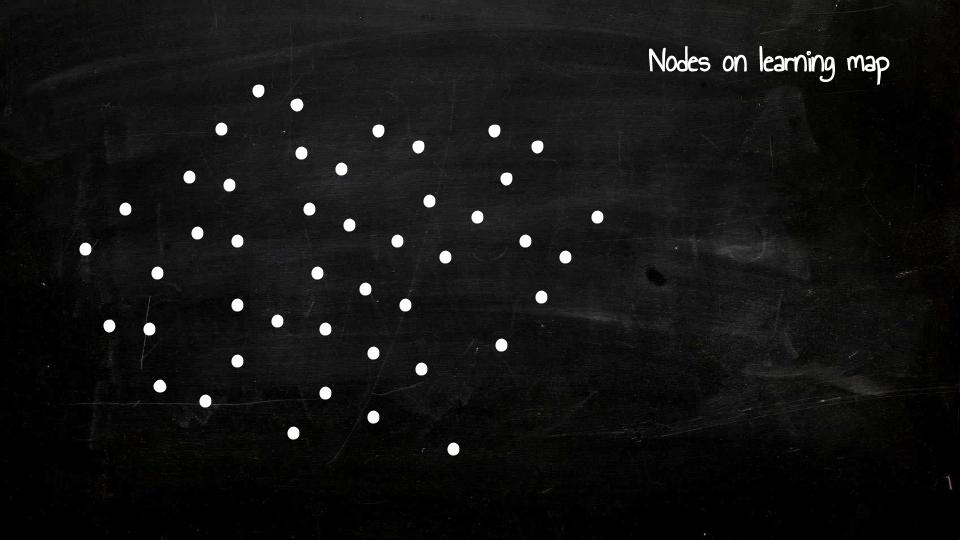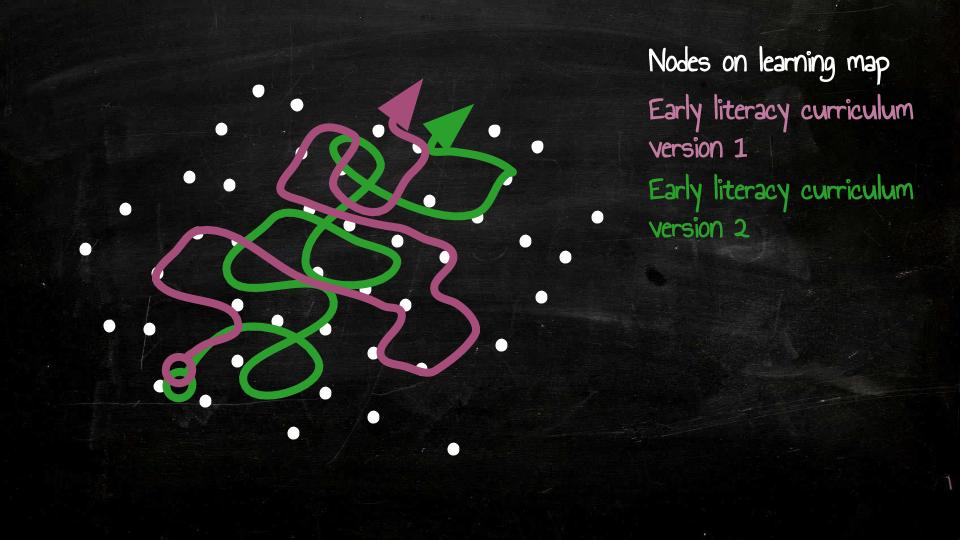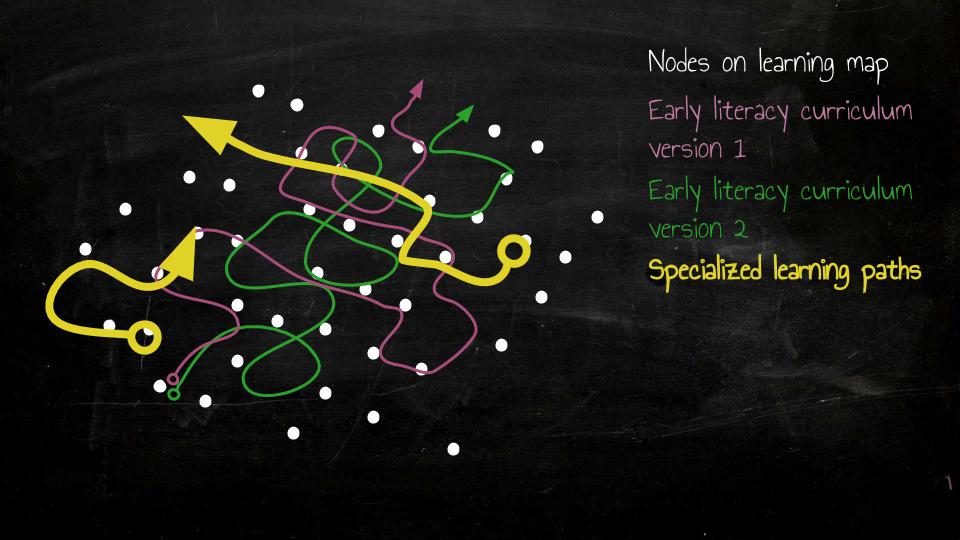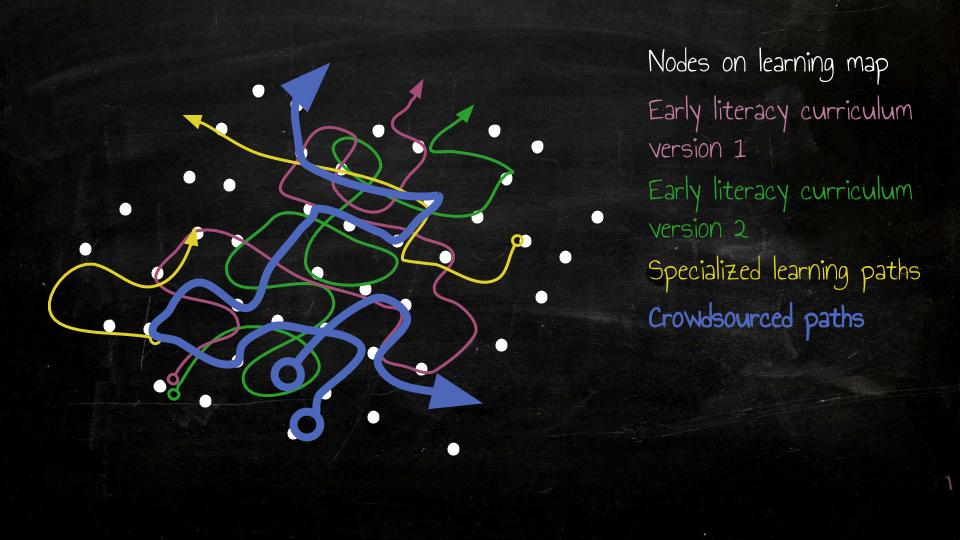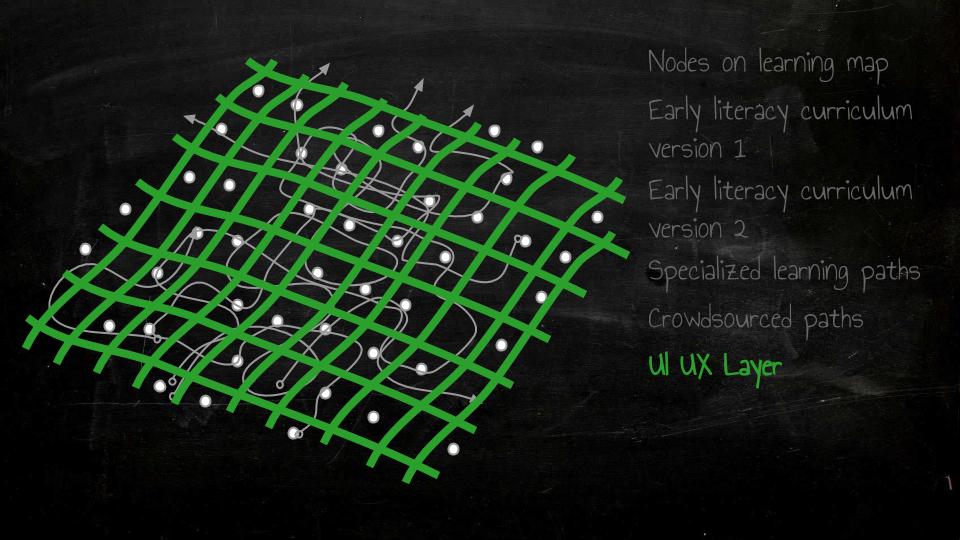One size does not fit all
What use would education be if it doesn’t provide what children need to be empowered and effective in this fast changing world? A one-size-fits-all, factory model education, does not help most children, let alone the most underserved children. This is why Dev4X is tackling this challenge with a radically different approach. We are developing a set of tools that can empower children to take their learning into their own hands through self-directed and peer-to-peer learning. This allows the core soft skills not taught traditionally to be exercised and fosters these children's curiosity. This self-empowering approach enables the platform to be used in areas where teachers and schooling are not available, but also as a supplemental tool within existing schools and educational programs. This will allow us to reach both the most underserved but also enhance the great work others are already doing!
We are developing this platform to be able to operate on low-cost tablets, charged off solar power, that can work standalone, disconnected from the internet. This allows us to be confident that it can not only work in populous areas where some infrastructure is available, but also in more challenging environments like refugee camps, rural areas or disaster and conflict zones. We are currently field testing various self-empowering approaches in East Africa, both through analog and digital tools and now focused on the most promising and versatile of these; a learning map which will be the core engine to drive the learning experience.
Our learning map platform will provide each child a gamified environment which motivates through multiple game and social mechanics, and allows the child to clearly see their position in the current learning path. This learning map tool provides the child a world to explore, where they can understand how each concept they are learning is linked to each other. They can skip ahead, review past work and even explore learning that is outside the traditional curriculum but that is of interest to them. This focus on child-driven learning inspires and fuels their passion for discovery, teaching critical 21st-century skills like curiosity, critical thinking, creativity and agility. The learning map world also shows them a social map of where their friends are, and helps peer-to-peer learning to take place and groups to form around shared interests. In turn, this focus on peer-to-peer learning fosters other 21st century skills like teamwork, leadership, collaboration and creative problem solving. Our technology becomes the ‘librarian’, a growing set of tools that empowers these children to take their learning into their own hands.
By leveraging children's innate curiosity and passions and fostering their creativity and joy for learning we are creating a learning environment that is student and community driven instead of top down. This disruptive technology will not only improve already implemented systems but is poised to provide much-needed clarity and focus into the otherwise rapidly expanding EdTech landscape.
Our approach:
The learning Map
First what we are doing is building a representation of what knowledge and skills look like as a map. Initially we are focusing on early literacy and numeracy and mapping each granular piece of knowledge, like knowing the alphabet, and granular skills, like pronouncing phonemes. All of these —which we call nodes— are placed on a map, however, the location value of that node remains dynamic. This forms the start of a data structure which can loosely be visualized as a set of points, with no defined pathways.
Now the data structure allows each node to be connected to another node, for example, you could connect learning about phonemes to be followed by learning about the concept of words. We then start by 'seeding' the map with connections by including some widely used curricula that you would find in traditional schooling systems. However these links are not hard coded, they are simply used as a possible pathway.
We also 'seed' the map with some shorter learning paths that teach specific topics or are specific to certain children. For example a specialized learning path for kids with dyslexia, or a specialized learning path for teaching children about agriculture. These learning paths may not be included in traditional curricula but could be used as detours by the children as they freely explore the map of what can be learned.
This then creates connections between the nodes and pathways that initially populates the map. These pathways and the connections between them are kept dynamic by introducing a weighting on the connection —which will then be influenced by the analytics and what the platform knows about the individual learner. One could start off on a particular path, then switch to another or even create new pathways by simply exploring. Through gamification and quest based learning, the children reach the desired outcomes on a highly adaptive and personalized path.
There may be some nodes that are not initially attached to any curricula or learning paths. I.E some nodes about health and safety, malaria prevention, social skills etc. These are not included in any path but are still on the map and still have content tagged to them that can be explored by the children through bonus activities.
Crowdsourcing and localizing learning
With our open approach and platform, we then leverage local educators and global specialists to upload their existing National standard curriculum, copy and modify an existing version or create completely new learning pathways. For example, local educators may have found a preferred way to teach literacy within Tanzania and could create their own specific learning path tagged with preferred content. The learning path would then be something any child could subscribe to if they wanted, and we could recommend it to them if they lived in Tanzania.
Ultimately, the map is just like a road map that shows you all the roads and pathways. Just like Google maps and Waze (a crowdsourced navigation app) that highlights a path based on your preferences —fastest route, no toll gates, avoid traffic jams— so we can highlight the suggested path for each child, without imposing this on them as the only option.
Curriculum and Content Analysis
Over time we suspect we will find that there is no perfect curriculum, one child would not stick to a single learning path, but that each child will have a mix of paths, including paths they created themselves. Each path and the content included in it is being continually analyzed and rated for each unique child, over time creating a curated and vetted list of what works for whom.
This becomes a powerful tool to determine the best approaches for each child. Anyone will be able to validate and rate different paths and how successful they are at achieving particular outcomes.
The user interface and experience
The next challenge we are overcoming is how to make the learning environment engaging and personalized for each child. We need to be able to render a user interface differently for each child, based on their maturity, age, culture and context.
A Map of learning to explore!
Privacy and Security of Data
setting ourselves apart from others.
The platform provides analysis of the children's usage data, over time becoming increasingly complex and detailed. This data will reside on the device and, by default, not be shared with anyone, including Dev4x. The learner will have the ability to share work samples or usage data at their own discretion or provide us with anonymized data if they wish to help advance the software. Recognizing the speed at which devices become outdated, the child's personal data can be stored and transferred via an SD card or backups via WiFi to external storage.
Dev4x is focusing both on privacy and on offline usage with low internet connectivity, because of this we had to rethink conventional wisdom of centralized cloud storage. By doing so we need to buck many trends and empower the children and the communities to own and control their data. Our approach here is setting us apart from others and counter-intuitively this approach allows us to scale far quicker and be deployed into areas conventional approaches just cannot reach.
What will happen when the millions of underserved children who are not getting a quality education or cannot even attend a school, could still learn all they needed to.
“This is not only possible, it is achievable within our generation! Help us achieve this together.”



